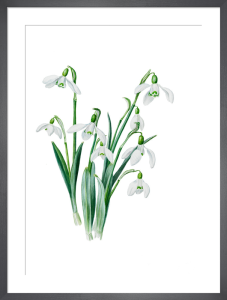
Focusing on seasonal wildflowers, Philippa Evans-Bevan pays tribute to the Snowdrop
Heralds of spring, snowdrops are a very uplifting and welcome sight that life is emerging from winter. Woodland floors, meadows and gardens quietly become decorated with this delicate green and white natural confetti, which develops into a carpet of white, as seen in Jersey now.
Despite its small elegant form, the snowdrop is a robust little plant and survives snowfall and very harsh temperatures. The scientific name given to the common snowdrop in 1753 by Carl Linnaeus is accurate, Galanthus Nivalis, which means, ‘Milk flower of the snow’.
Provenance has largely dictated their hardiness and Snowdrops originate from a large area of Europe stretching from Albania to Greece, Sicily to Slovakia and from Turkey to Ukraine. Although a familiar sight in the British Isles today and one of the most popular plants in the world, snowdrops are not native to our island shores and their popularity has waxed and waned.
In the late 19th Century collecting them was considered the preserve of gentlemen, but an upsurge of interest occurred when soldiers returning home from the Crimean War, brought unusual spoils in the form of tiny snowdrop bulbs. A poignant, symbol of life returning in the midst of winter.
As well as providing a refreshing sight as they poke their tiny little heads up through the leaves in winter, Snowdrops possess a surprising chemical armoury deployed in modern pharmaceuticals. The compound galanthamine is used to manage Alzheimer’s disease and to relieve traumatic injuries to the nervous system. Lectin (a carbohydrate-binding protein) common in snowdrops is also an effective natural insecticide against a variety pests, including moths, and aphids.
Snowdrop science also partly explains their prolificacy. The seeds are surrounded by oil-rich elaiosome, which is highly palatable to ants. The ants carry them into their nests, eat the elaiosome and discard the seeds, helping to distribute them.
A good place to see swathes of Snowdrops is the Cambridge Botanic garden, which has no less than 44 different snowdrop varieties, cultivars and hybrids.
Snowdrops feature prominently in art and literature throughout history:
Mary Robinson, in her 1797 novel Walsingham, declared: ‘The Snowdrop, winter’s timid child, awakes to life bedew’d with tears’.
The British Horticulturalist and writer E.A. Bowles became known as the Godfather of Galanthus for his paintings of snowdrops, and Wordsworth crowned them ‘February fair-maidens’.





